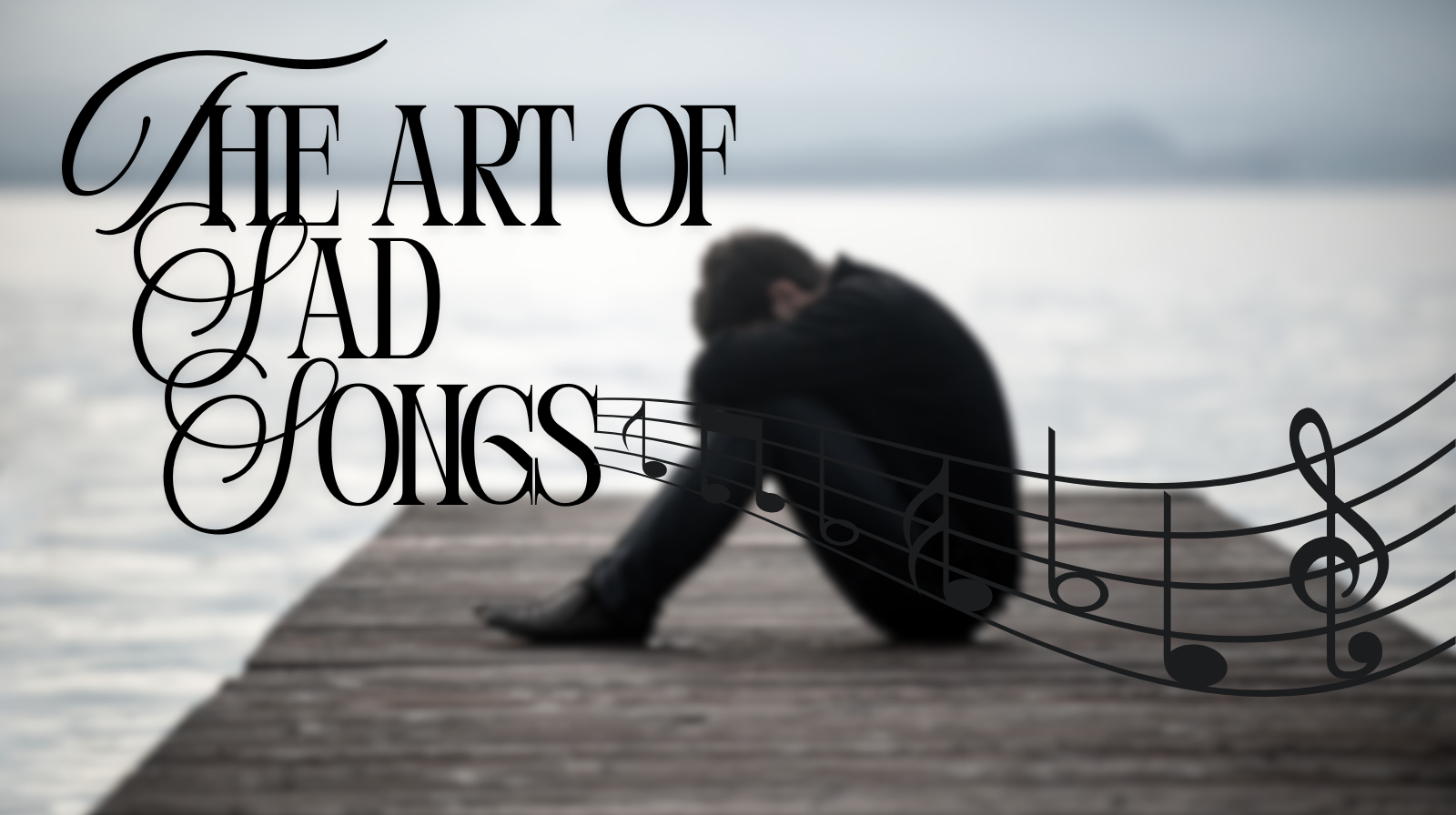The Art of the Sad Song: Why Do We Love Music That Makes Us Cry?
The Beautiful Paradox
It’s one of music’s most beautiful paradoxes: why, on a perfectly good day, would we choose to listen to a song that we know will make us feel sad? Why do we find comfort in heartbreak, and a strange sense of joy in a melancholic melody?
As a songwriter, I've spent a lot of time thinking about this. The truth is, a great sad song doesn’t just make you sad; it makes you feel understood. It’s a form of emotional alchemy, turning pain into beauty. Today, I want to explore the art behind that magic—how these songs have such a powerful hold on us.
Part 1: The Sound of Melancholy (The Music)
The feeling of a sad song often hits you before you even process the words. That’s intentional. Songwriters use specific musical tools to create a mood of melancholy.
Minor Keys: While it’s not a hard-and-fast rule, many sad songs are written in a minor key. These chords have a natural, inherent tension and a more somber quality than their "brighter" major key counterparts.
Slow Tempo: A slower pace mimics a resting heart rate or a thoughtful, deliberate mood. It gives the listener space to breathe and to feel.
Descending Melodies: Melodies that move downwards often feel like a musical sigh. Think of a simple "do-ti-la-sol..." scale; that downward movement can feel inherently reflective or sad.
These elements combined create a soundscape that prepares you for an emotional journey.
Part 2: The Power of a Story (The Lyrics)
The music sets the mood, but the lyrics are what make us feel seen. The best sad songs are rarely just a list of sad feelings. They are detailed, specific stories that allow us to step into a moment.
A perfect example is Dan Fogelberg’s “Same Old Lang Syne.” It’s a complete cinematic story in five minutes: a chance encounter with an old flame in a grocery store on Christmas Eve. The beauty isn't in saying "I feel nostalgic and sad"; it's in the details—the six-pack of beer, the snow turning to rain. Those specific images are what make the feeling universal.
It's this kind of storytelling that I was drawn to when I was starting out. My debut single, “Fairy Tale,” is often mistaken for a romantic love song, but it was written from a place of bittersweet, unrequited love. The lyrics tell a story of dreaming for something you can’t quite have. I tried to match the melody to that feeling—a little bit hopeful, but with an undercurrent of melancholy. The fact that it's still one of my most-streamed songs tells me that people connect with that complex, bittersweet feeling.
Why It Feels Good
So, why do we love it? Because when we hear our own complicated feelings of heartbreak, regret, or nostalgia reflected back at us in a beautiful song, we don't feel sadder. We feel less alone.
A great sad song is a companion. It’s a friend that sits with you in the dark and says, "I get it. I've been there too." And there is nothing more comforting than that.
More on the Art of the Sad Song: An FAQ
1. Is listening to sad music good for you? Yes, studies have shown it can be very healthy. Listening to sad music can provide a safe, cathartic release for our own emotions, increase empathy by allowing us to see from another's perspective, and ultimately make us feel less alone in our feelings.
2. Why do sad songs give you chills? That feeling of "chills" or "frisson" is a powerful emotional and physiological response. It's often triggered when a song violates our expectations in a beautiful way—like a sudden key change or a soaring vocal—leading to a release of dopamine in the brain, the same chemical associated with pleasure. It's our brain's way of rewarding us for deeply engaging with the music.
3. What is the saddest key in music? While it's subjective, many musicians and listeners consider D minor to be one of the saddest keys. Its inherently melancholic sound has been used for centuries in classical music to convey tragedy and deep emotion.
4. How do you start writing a sad song? The best way to start is to focus on a single, specific feeling, not a general idea of "sadness." Is it regret? Nostalgia? Loneliness? Once you have that core emotion, think of a specific memory or image that represents it. The story will grow from that one honest detail.
5. What is the saddest song ever written? That's the impossible question! It's completely personal. While some might say a classic like Leonard Cohen's "Hallelujah" or Johnny Cash's cover of "Hurt," the "saddest" song is always the one that tells a story you understand in your own heart.
For more mood-based listening, you can explore the curated collections on my Playlists page.
What's a "sad song" that brings you comfort? I'd love to hear about it in the comments.





Kevin I.'s new EP "My Continuum" launches in Japan on Cool Sound Records. See photos from Tower Records and learn about the special Japanese edition.